Courses, Credits, & Placement
Important: Please see the UNC Course Catalog for full details on the courses below.
Course Credit Links
Transfer Credit
Introductory Courses
Placement Exams for Introductory Courses
A comprehensive list of all Physics courses offered by our department can be found here.
All Astronomy courses offered by our department can be found here.
SERVICE COURSES
The Department of Physics & Astronomy at the University of North Carolina-Chapel Hill has completed a multi-stage transformation of its introductory physics courses that has improved the ability of students to learn the material. Most students have responded favorably to the new courses, stating that their content is more interesting and relevant and that they generally like the new format.
In a process that began in 2004, the department created four new courses based on effective, research-validated methods that present students with exciting and relevant physics topics tailored for their fields of study. The new courses were launched in the 2014-15 academic year. They now provide physics instruction to more than 1,600 students each year.
Students majoring in the physical and mathematical sciences (including physics, chemistry, mathematics, computer science, and environmental science) enroll in PHYS 118/119. Those courses include special relativity and quantum mechanics in addition to mechanics, electricity & magnetism and optics. Taken concurrently with intermediate and advanced calculus classes, PHYS 118/119 provides an introduction to modern physics as well as a rigorous foundation for further study of physics and related subjects.
Students majoring in the life sciences (including biology and the health sciences) enroll in PHYS 114/115. Those courses include topics from mechanics, electricity & magnetism, optics, and nuclear physics that are connected directly to biology and biomedicine. Some of these topics, such as diffusion and nonlinear stress and strain, are not typically taught in introductory physics courses but are important in the life sciences. Taken after completing one semester of calculus, PHYS 114/115 provides a sound introduction to the physical principles relevant to living things.
Both course sequences are taught in the “lecture/studio” mode that maximizes the benefits of active engagement in hands-on, minds-on learning in the context of courses with large enrollment. Each course is made up of “modules,” typically two per week. Each module begins with a pre-class assignment that involves reading from the textbook or viewing a video and then answering questions through an online portal. This prepares the students for a lecture in which they discuss with one another questions the instructor poses about the relevant physics concepts and use classroom response devices to answer. The lecture is followed by a two-hour studio session in which students work in small groups on experiments, guided tutorials, context-rich problems, and computer simulations. The module ends with a homework assignment (completed online) to reinforce the concepts and provide additional practice in problem-solving.
This mode of instruction, pioneered at Kansas State University and the Colorado School of Mines, makes extensive use of the findings of physics education research in the design of class activities to enhance students’ learning. The effectiveness of the lecture/studio mode, as implemented at UNC, has been quantified in a recent Master’s thesis by David Guynn. That thesis presented a detailed analysis that demonstrated statistically significant gains in learning by students receiving instruction in the lecture/studio mode compared to those who received traditional instruction.

